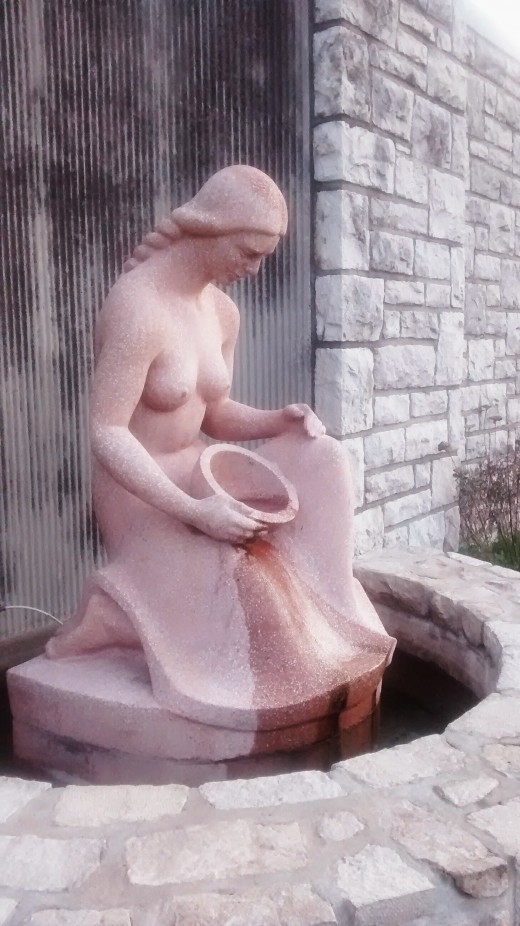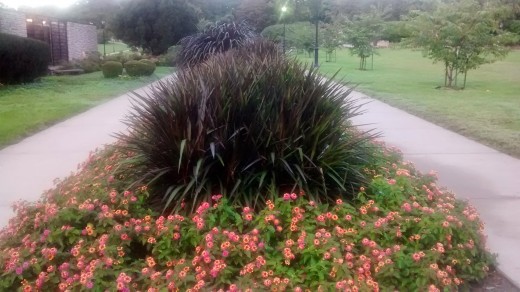- HubPages»
- Travel and Places»
- Visiting North America»
- United States»
- Missouri
Loose Park: Kansas City’s Urban Oasis

An Introduction to Loose Park
I first visited Loose Park with a friend several years after moving to Kansas City. On that cold November day, the Laura Conyers Smith Municipal Rose Garden was still in full bloom, and I fell hopelessly in love with one of the most historic spots in the metro area. Since then, I’ve spent many afternoons and evenings reading, writing or taking photographs in the park.
Located just south of the Country Club Plaza and west of the UMKC campus, this green space is popular with Kansas Citians of all ages and backgrounds. The entrance to the park features a memorial statue of Jacob L. Loose, whose widow established the park in his memory. Other statues and plaques throughout the park memorialize the Osage tribes and their relationship with French traders during the early exploration of the region. The running track circuiting the 75-acre park draws joggers and dog walkers alike. Walking trails throughout the south section of the park are popular with canine owners as well. The rose garden in the center of the park draws people from many walks of life for photo shoots, and weddings frequently take place in front of the central fountain. The northern end of the park features modern playground equipment for the amusement of Kansas City’s youngest citizens. Also in this portion of the park, concrete picnic tables attract crowds throughout the spring, summer and fall.

A Brief History of the Land
The rich history of Loose Park dates back before the incorporation of the city of Kansas City. Even before the Louis and Clark Expedition arrived on the banks of the Kaw River in 1804, French traders explored the land where Loose Park sits today. At that time, the area was inhabited by my ancestors from the Osage tribe. Members of both the Big and Little Osage nations traded and intermarried with the French over the course of about 150 years. Two life-size statues of the Osage flank the northern side of the walkway to the rose garden, and large bronze plaques scattered around the park document the history of French-Osage relations as well as other history of the area.


During the American Civil War, the land on which Loose Park sits became the site of the Battle of Westport on October 23 1864. The battle involved an estimated 29,000 individuals and is commonly known as the “Gettysburg of the West.” This military encounter in which the Union Army pushed back Confederate troops was the last significant battle west of the Mississippi.
This plot of land remained in private ownership until 1927. At that time, Ella Loose, who had purchased the property the previous year, gave it to the city.

Wildlife in Loose Park
Wildlife is abundant in Loose Park. Naturally, the city has a few wild creatures of the human variety that frequent the park, but most of the human that frequent the park are domesticated. However, during a visit, you are likely to encounter dozens of squirrels, a few shy chipmunks, mallard ducks and Canadian geese. Flower beds and herb gardens filled with local vegetation attract pollinators such as moths and bees in droves, and the park is a great spot to find monarch butterflies late each September during the monarch migration.

Signs throughout the park caution visitors not to feed ducks and geese here. Kansas City has an appreciation for its wildlife, and the parks and recreation commission takes careful measures to makes sure birds, waterfowl and other creatures stay alive and stay wild.

Vegetation in Loose Park
For some people, fauna is the primary reason to visit Loose Park. Others, like myself, enjoy the wide variety of plant life here. The Laura Conyers Smith Municipal Rose Garden blooms each year at the beginning of June and again in late summer or early fall. The carefully tended beds, which recently underwent an extensive renovation, often bloom into late November or early December. However, roses aren’t the only breathtaking flora on the property.


Majestic oaks and magnificent walnut trees provide delicious snacks for squirrels, chipmunks and other animals in the park. Beautiful weeping willows and cypress trees line the park’s small pond, providing a picturesque backdrop for wedding photos and qinceañera parties. Redbuds and dogwood trees bloom at the first blush of spring, long before the roses are in bloom, and their lush foliage decorates the grounds throughout summer and fall. As the long days of summer give way to the shorter days of autumn, maples and sugar gum trees conspire with other trees and bushes to paint Loose Park in fiery hues.
Fountains and Other Features
Water plays an important part in the landscaping of Loose Park. Naturally, in the City of Fountains, the most iconic park features beautiful water play. The two Osage statues bear bowls of water that trickle into a waiting pool. The central fountain of the rose garden often plays host to children and families after school or on summer evenings. The park also contains a fish pond overhung by willows and accented by bridges and fountains. Waterfowl splash in the water, and amuse visitors as they dive for food or put on a show to find a mate.

One of the most unique and unknown features of the park is a Japanese tearoom tucked behind the park’s garden center. Established in 2006 to honor Kansas City’s relationship with Kurashiki, our Japanese sister city, the tearoom hosts formal Japanese tea ceremonies.
If you live in Kansas City or visit any time of the year, enjoy some time out in Loose Park. It’s a great place to people watch, walk your dog or brush up on your Kansas City history. Kids can run off some steam at the playground while mom and dad enjoy the sights and sounds of nature.

© 2014 Marie Gail Stratford








